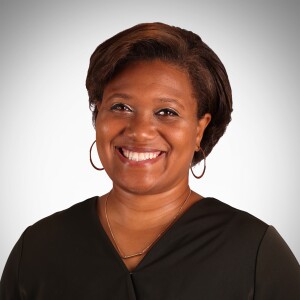GAINES TOWNSHIP, Mich. — Thursday evening, a shooting occurred outside of a graduation ceremony, in the parking lot at East Kentwood High School in Gaines Township. Two people got hurt.
Friday evening, the Kent County Sheriff’s Office reported that five people were arrested. At least two of them could be connected to the shooting.
“There were two other school graduation shootings in the United States yesterday,” said University of Michigan Ann Arbor professor Marc Zimmerman during a Zoom interview on Friday. “I don’t know much of the details about them. But, the bottom line is something's breaking at the seams.”
The shooting comes after a week of shootings: one in the parking lot of the Chick-Fil-A on the Beltline, another on South Division, and another on Kalamazoo Avenue.
Zimmerman is the co-director at the university’s Institute for Firearm Injury Prevention and director of the Youth Violence Prevention Center. He said that gun violence is an epidemic nationally and locally.
In incidents like the shooting at the high school, 80 percent of shooters are usually at an internal crisis point, sometimes stemming from bullying at either home, school or work, he said.
“Our society has become one of contentiousness and right and wrong,” Zimmerman said. “You’re either on my side or you’re not on my side. And, there’s no room for trying to understand each other.”
He added that kids witnessing violence daily whether in their homes, communities or seeing it on the news can influence their behavior.
However, kids are not to blame for the violence, he said.
“There’s been redlining, where certain communities have been identified to have less opportunities, then you have de-industrialization where there’s fewer jobs. The schools are not as well funded. The classes are bigger so the kids don’t have the opportunity to really develop cognitive skills as alternative skills to fighting,” he said. “And, you’re in this culture where you see firearms on televisions and you see violence as a solution, and you hear leaders talking about this. How do we blame the kids? It’s an adult problem.”
Zimmerman said adults are creating a world where children aren’t encouraged to think of ways to get along.
However, he noted that there's a few anti-violence programs that seek to prevent shootings and other related incidents, like the Sandy Hook Foundation. It was created after the tragic massacre at Sandy Hook Elementary School in 2012.
Locally, the City of Grand Rapids and the Urban League launched the Cure Violence program, which teaches everyday people how to intervene and stop street violence before it grows into shootings.
Zimmerman also added that anonymous tip programs also help to curb violence.
“In the state of Michigan we have an anonymous reporting system,” Zimmerman said. “So, if you notice something that is sort of awry with your friend or with somebody, you have a place to call and be anonymous.”
The Silent Observeris one of Michigan’s oldest anonymous reporting systems. President Chris Cameron said during an interview on Thursday that the program is completely anonymous. They do not use caller ID. They do not track IP addresses. And, all tips leading to an arrest leads to a money reward.
Zimmerman added that there's a few programs in the state that are anonymous tip programs use for students, like Fast 50. Kids can leave a tip that goes directly to the principal and he or she then decides if law enforcement needs to be involved or if mental health services are best.
Zimmerman believes in order to reduce violence significantly change needs to happen at the policy level, culturally, environmentally, and behaviorally. However, there’s things everyone can do on a daily basis to keep communities and schools safe.
“Being tolerant of each other. Using our problem solving skills. You know, counting to 10 before you respond. Not being impulsive,” Zimmerman said. “Yes, it's policy. But, I think we have to think critically about what communities, neighborhoods, and schools that want because you know we to think globally and act locally.”



